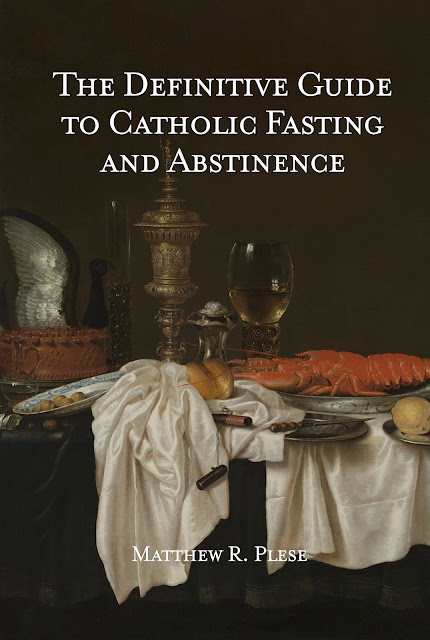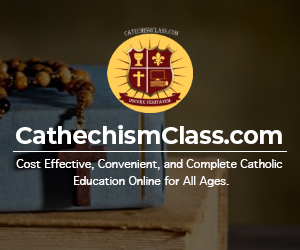The Ancient Institution of Ember Days
Ember days are categorized by three elements: prayers for both thanksgiving and petition, penance in the form of fasting and abstinence, and ordinations. Like Rogation Days, Ember Days developed early in these times, taking the form that would continue for centuries. The Catholic Encyclopedia explains:
“At first the Church in Rome had fasts in June, September, and December; the exact days were not fixed but were announced by the priests. The Liber Pontificalis ascribes to Pope Callistus (217-222) a law ordering the fast, but probably it is older. Leo the Great (440-461) considers it an Apostolic institution.”
By the time of Pope Gregory I, who died in 601 AD, they were observed for all four seasons though the date of each of them could vary. In the Roman Synod of 1078 under Pope Gregory VII, they were uniformly established for the Wednesday, Friday, and Saturday after December 13th (St. Lucia), after Ash Wednesday, after Pentecost Sunday, and after September 14th (Exaltation of the Cross).
While they were initially observed only in Rome, their observance quickly spread as the Catholic Encyclopedia further adds:
“Before Gelasius the ember days were known only in Rome, but after his time their observance spread. They were brought into England by St. Augustine; into Gaul and Germany by the Carlovingians. Spain adopted them with the Roman Liturgy in the eleventh century. They were introduced by St. Charles Borromeo into Milan. The Eastern Church does not know them. The present Roman Missal, in the formulary for the Ember days, retains in part the old practice of lessons from Scripture in addition to the ordinary two: for the Wednesdays three, for the Saturdays six, and seven for the Saturday in December. Some of these lessons contain promises of a bountiful harvest for those that serve God.”
Dom Prosper Guéranger adds that the institution of the Ember Days is further based on the fast ordered by God for the changing of the seasons in the Old Testament. Thus, the Church hallowed that fast and adopted it for the worship of the True God thus fulfilling the Lord’s words that He came not to abolish but to complete (cf. Matthew 5:17) what was instituted in the Old Testament:
“We may consider it as one of those practices which the Church took from the Synagogue; for the prophet Zacharias speaks of the fasts of the fourth, fifth, seventh, and tenth months. Its introduction into the Christian Church would seem to have been made in the apostolic times; such, at least, is the opinion of St. Leo, of St. Isidore of Seville, of Rabanus Maurus, and of several other ancient Christian writers. It is remarkable, on the other hand, that the orientals do not observe this fast.”
Spirituality of the Ember Days
The purpose of Ember Days is, in the words of the Catholic Encyclopedia, to “thank God for the gifts of nature, to teach men to make use of them in moderation, and to assist the needy.” As a result, their focus differs from the focus of the Rogation Days to which they are often compared. An article on Liturgies.net explains the separate, specific focus of Rogation Days as such:
“Rogation Days are the four days set apart to bless the fields and invoke God's mercy on all of creation. The 4 days are April 25, which is called the Major Rogation (and is only coincidentally the same day as the Feast of St. Mark); and the three days preceding Ascension Thursday, which are called the Minor Rogations. Traditionally, on these days, the congregation marches the boundaries of the parish, blessing every tree and stone, while chanting or reciting a Litany of Mercy, usually a Litany of the Saints.”
In addition to the general purpose of thanking God and invoking His blessings, the author of Barefoot Abbey provides specific intentions for each of the Ember Days by season so that we can render thanks to Almighty God for the fruits of the earth which specifically become instruments of His grace through the Sacraments:
Winter or Advent Ember Days are after the Feast of St. Lucy (December 13th): Give thanks for the olives that make holy oils for Unction. Spring or Lenten Ember Days are after Ash Wednesday: Give thanks for the flowers and bees that make blessed candles as in for Baptism and upon the alter. Summer or Whit Ember Days are after the Solemnity of Pentecost: Give thanks for the wheat used to make the Eucharist hosts. Autumn or Michaelmas Ember Days are after the Feast of Exaltation of the Holy Cross (September 14): Give thanks for the grapes that make wine for the Precious Blood of Christ.
By writing these down and recalling them for the Ember Days of each season, we can be more intentional in what we are thanking God for in any given season. In this respect, the Ember Days further distinguish themselves from the Rogation Days.
The Cultural Impact of the Ember Days to Japan
Ember Days would remain obligatory for the faithful until the changes immediately after Vatican II in the mid-1960s. In fact, their observance has led to several long-term cultural implications. For instance, Ember Days are the reason we have “tempura” dishes in Asian cuisine. For instance, shrimp tempura is based on Ember Days, which are known as quatuor tempora in Latin.
Portuguese (and Spanish) missionaries to the Far East would invite the converted Japanese to fast during the quator tempora by eating a dish that consisted of battered and deep-fried seafood and vegetables called “Peixinhos da Horta” in Portuguese which literally translated to “little fishes from the garden.” It is a dish consisting of bell peppers, squash, and green beans that is fried into a flour-based batter. The term steadily gained popularity in southern Japan and became widely used to refer to any sort of food prepared using hot oil, battered or not. This term would persist even after Catholicism was outlawed by the Japanese and the Church’s missionaries were executed or exiled in the late 1500s. It was not until the 1870s that Christianity legally returned to Japan. But the faithful of Japan continued to keep the Faith alive in their families, including through the keeping of fast and abstinence days.
Ember Days Are Always on Wednesdays, Fridays, and Saturdays
Ember Days are observed on Wednesdays, Fridays, and Saturdays in keeping with the ancient weekly devotional fast that originated with the Apostles. On the rationale for fasting on these days, St. Peter of Alexandria, Patriarch of Alexandria until his death in 311 AD, explains: “On Wednesday because on this day the council of the Jews was gathered to betray our Lord; on Friday because on this day He suffered death for our salvation.” Likewise, the 1875 Catechism of Father Michael Müller adds: “This practice began with Christianity itself, as we learn from St. Epiphanius, who says: ‘It is ordained, by the law of the Apostles, to fast two days of the week.’” Some places added Saturday fasting as well, as noted by St. Francis de Sales who writes, “The early Christians selected Wednesday, Friday and Saturday as days of abstinence.”
Father Slater notes in “A Short History of Moral Theology” published in 1909 how these weekly devotional fasts gradually ended but were retained for the Ember Days:
“The obligation of fasting on all Wednesdays and Fridays ceased almost entirely about the tenth century, but the fixing of those days by ecclesiastical authority for fasting, and the desire to substitute a Christian observance at Rome for certain pagan rites celebrated in connection with the seasons of the year, seem to have given rise to our Ember Days… About the tenth century the obligation of the Friday fast was reduced to one of abstinence from flesh meat, and the Wednesday fast after being similarly mitigated gradually disappeared altogether.”
Ember Days in the Early 1900s
The days of obligatory fasting as listed in the 1917 Code of Canon Law were the forty days of Lent (including Ash Wednesday, Good Friday, and Holy Saturday until noon); the Ember Days; and the Vigils of Pentecost, the Assumption of the Blessed Virgin Mary, All Saints, and Christmas. Partial abstinence, the eating of meat only at the principal meal, was obligatory on all weekdays of Lent (Monday through Thursday). And of course, complete abstinence was required on all Fridays, including Fridays of Lent, except when a holy day of obligation fell on a Friday outside of Lent. Saturdays in Lent were likewise days of complete abstinence. Fasting and abstinence were not observed should a vigil fall on a Sunday as stated in the code: “If a vigil that is a fast day falls on a Sunday the fast is not to be anticipated on Saturday but is dropped altogether that year.”
Canon 1006 of the 1917 Code further stated men were to be ordained only on Ember Saturdays, Holy Saturday and the Saturday before Passion Sunday, but the Code added “if a serious cause intervenes, the bishop can have them even on any Sunday or feast day of the order.” Episcopal consecration was reserved for Sundays and for Feasts of the Apostles. Thus, even the 1917 Code kept the ancient practice of holding Ember Days as privileged days for ordinations.
Many changes though would continue through the 20th century. In one such change, on January 28, 1949, the United States bishops issued modified regulations on abstinence in America again after receiving a ruling from the Sacred Congregation of the Council. Partial abstinence replaced complete abstinence for Ember Wednesdays, Ember Saturdays, and the Vigil of Pentecost. Previously, all Ember Days were days of complete abstinence.
Changes to Ember Days in the Early 1960s
By 1962, the laws of fasting and abstinence were as follows as described in Moral Theology by Father Heribert Jone and adapted by Father Urban Adelman for the “laws and customs of the United States of America” copyright 1961:
“Complete abstinence is to be observed on all Fridays of the year, Ash Wednesday, the Vigils of Immaculate Conception and Christmas. Partial abstinence is to be observed on Ember Wednesdays and Saturdays and on the Vigil of Pentecost. Days of fast are all the weekdays of Lent, Ember Days, and the Vigil of Pentecost. If a vigil falls on a Sunday, the law of abstinence and fasting is dispensed that year and is not transferred to the preceding day.”
1960 also saw a change to the calculation of how the autumnal Ember Days can follow as the Barefoot Abbey website explains:
“Autumn Ember Days are unique in their scheduling. With the 1960 revisions to the breviary rubrics and the newly instituted system of counting Sundays from August to December, Pope John XXIII added that the September Ember Days should not only follow the Feast of the Exaltation of the Cross as they had historically done, but also fall after the 3rd Sunday of September.”
Gregory DiPippo explains in more detail how the counting of Sundays changed at this time:
“The first Sunday of each of these months is the day on which the Church begins to read a new set of scriptural books at Matins, with their accompanying antiphons and responsories; these readings are part of a system which goes back to the sixth century...The 'first Sunday' of each of these months is traditionally that which occurs closest to the first calendar day of the month, even if that day occurs within the end of the previous month… In the 1960 revision, however, the first Sunday of the months from August to November is always that which occurs first within the calendar month.”
Thus, not only did fasting change before Vatican II but the possible dates of the Ember Days were changed as well.
The Abandonment of Our Heritage
Shortly after the close of the Second Vatican Council, Pope Paul VI issued an apostolic constitution on fasting and abstaining on February 17, 1966, called Paenitemini, whose principles were later incorporated into the 1983 Code of Canon Law. Paenitemini allowed the commutation of the Friday abstinence to an act of penance at the discretion of the local ordinaries and gave authority to the episcopal conferences on how the universal rules would be applied in their region. Abstinence which previously began at age seven was modified to begin at age fourteen. Additionally, the obligation of fasting on the Ember Days and on the remaining vigils was abolished.
Father Lew, commenting on the post-conciliar changes, admonishes priests accordingly:
“True, modern canon law is silent about the Ember Days. But tucked away in an obscure corner of the 1970 missal is a reference to ‘the Four Times, in which the Church is accustomed to pray to our Lord for the various needs of men, especially for the fruits of the earth and human labours, and to give him public thanks’ (Normæ Universales de Anno Liturgico, 45). The same words remain in the 3rd editio typica of this missal, published in 2002. However, the ‘adaptation’ of these days is left to Bishops’ Conferences: they can decide how many are to be observed, and when, and with what prayers. A couple of ‘fast days’ are duly marked on each year’s Ordo for the church in England and Wales, one in Lent and one in October, with the suggestion of celebrating a votive Mass of a suitable kind. Surely so ancient a tradition as the Ember Days must not be allowed to fade away.”
May we all return to the practice and observance of the Ember Days for the glory of God and for reparation for sin. Offering up our fasts for vocations and for the priests who are ordained on – or around the Ember Days – would be a meritorious and charitable work we can do. And we can spend more time learning about this part of our heritage. Like Ember Days, so much of our history of fasting and abstinence has been forgotten.
Want to learn more about the history of fasting and abstinence? Check out the Definitive Guide to Catholic Fasting and Abstinence.









.jpg)

.jpg)
.jpg)
.jpg)











